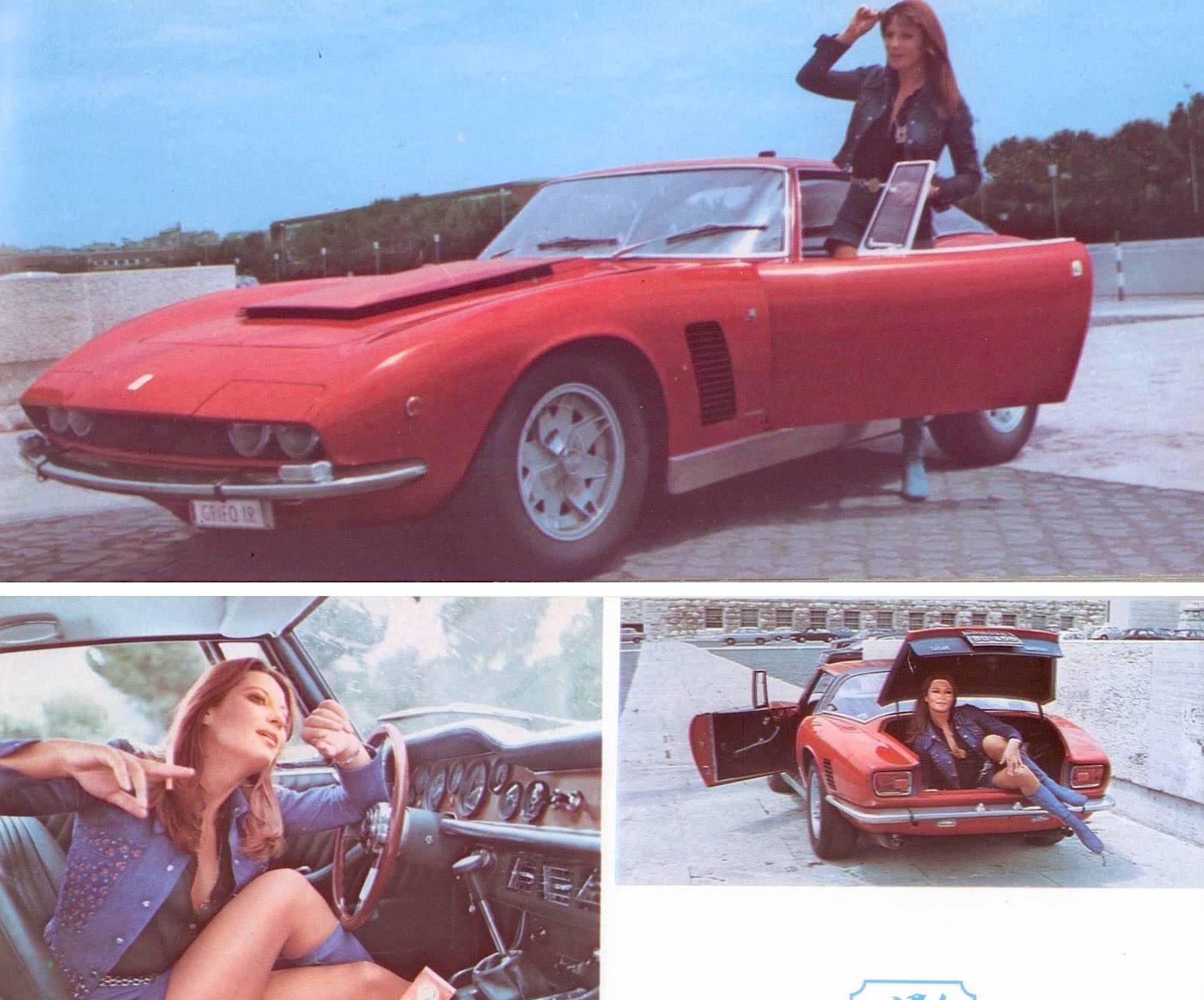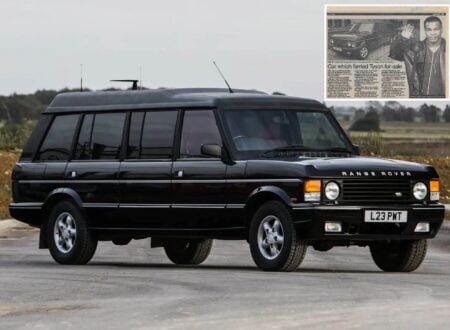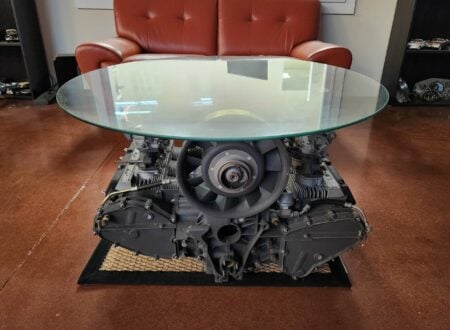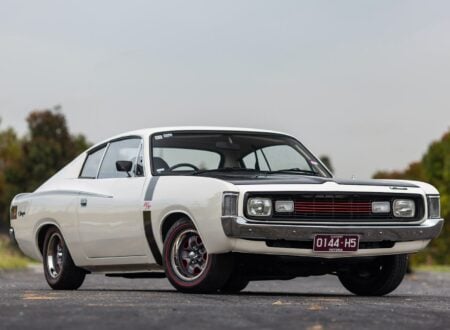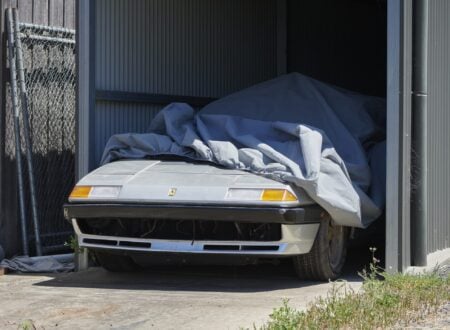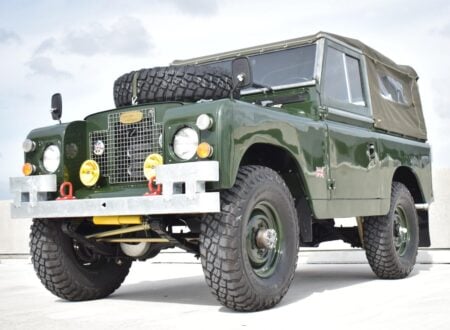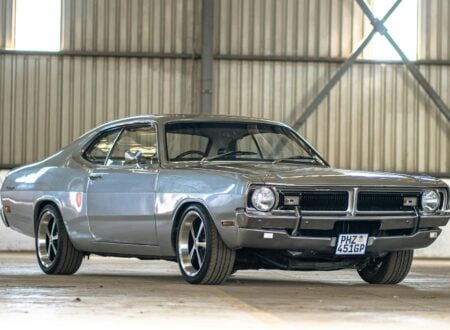The Iso Grifo ranks as one of the most desirable GT cars of all time. It was created by three of the great names in Italian sports car heritage: Renzo Rivolta, Giotto Bizzarini and Giorgetto Giugiaro, using a tried and tested formula, powered by a 327 cu. in. (5.4 litre) small block Chevrolet V8 engine driving through a Borg Warner four speed gearbox, and Salisbury limited slip differential.
Suspension featured a fully independent front with “A” arms while at the rear a De Dion system. Brakes were discs all around and the whole was clothed in beautifully head-turning Giugiaro coachwork.
If you are considering the purchase of an Iso Grifo you have in all probability already done research on the car and the people who were responsible for its creation: so you already know what a treasure an Iso Grifo is and understand why you are so keen to have one parked in your garage.


For many classic car enthusiasts however the cars from Iso Autoveicoli S.p.A. may be an undiscovered mystery: but be assured they are a mystery well worth investigating. Indeed, the Iso Grifo is one of the most outstanding GT automobiles from the golden era of the 1960’s to 1970’s: and that makes it one of the most outstanding cars in the history of cars.
From Refrigerators to Exotic GT Cars
Before Iso began building some of the coolest exotic sports cars on earth they had their beginnings as a company named “Isothermos” manufacturing refrigeration units. In their development of the “coolness” of the company they went on to make small capacity motorcycles and motor scooters of the sort that Italians must have loved because they seemed to be a very trendy item during the post-war period.
Motor scooters like the Iso would go on to become a cool “must have” item for the young “Mods” in Britain during the 1960’s. Iso also made three wheel “motocarries” which earned a reputation for durability: and the “coolness” did not stop there but they also manufactured the Iso Neve series of snowmobiles.
By the early 1950’s the economies of the nations of Europe were still struggling to recover from the cost of the war that had raged just a few years earlier. The head of Iso, Renzo Rivolta, got together with a couple of aeronautical engineers named Ermenegildo Preti and Pierluigi Raggi with a view to his company creating an economical but stylish small car to provide people with the freedom of individual transport.
The vehicle they created was the Isetta bubble car and it was to become a car that was sufficiently cool for Elvis Presley to buy one for his friend Colonel Parker as a Christmas gift in 1957.
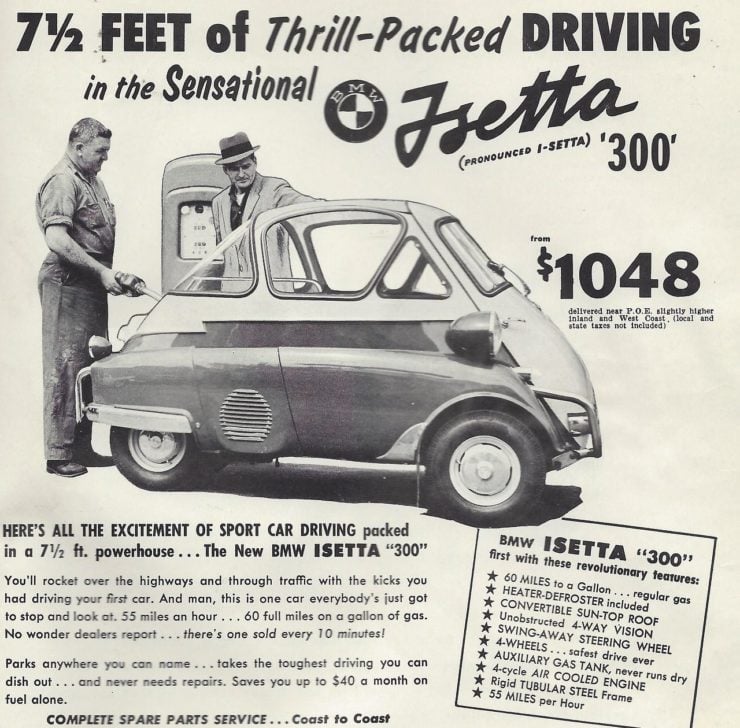

The bubble car would become very popular in Britain and it so annoyed Leonard Lord, the head of British Motor Corporation, that he instructed his design team to create a small “real car” so the motorists of Britain would not be saddled with these diminutive bubble cars.
The result of that was the Alex Issigonis designed Austin/Morris Mini that would become a fashion icon of Britain’s 1960’s “Carnaby Street” era: an era of Mini cars, mini skirts, and mini transistor radios so you could have the music of the Beatles and the Rolling Stones wherever you went.
But it was not to be the physical coolness of refrigerators in which to keep your supply of gelati, nor the trendy “coolness” of motor scooters and Isetta bubble cars, that would be the things that Iso would be fondly remembered for.
It was when they moved into the design and building of some of the most desirable GT cars of the 1960’s and 1970’s that the name Iso would be etched into the annals of performance car history.
The Iso Rivolta: 1962-1970
The Isetta bubble car was so successful that Iso could not manufacture enough of them to meet demand. So Renzo Rivolta licensed the design to other manufacturers, perhaps the most famous of these being BMW.
In the wake of the Second World War BMW were a struggling company trying to rebuild their fortunes and the two keys to them accomplishing that were the Isetta bubble cars and related vehicles, and the Volkswagen-like BMW 700 powered by a 697 cc flat twin engine. These two vehicles sold in sufficient numbers to rebuild BMW’s financial capacity and enabled them to create their Neue Klasse (New Class) series of cars beginning in 1962.
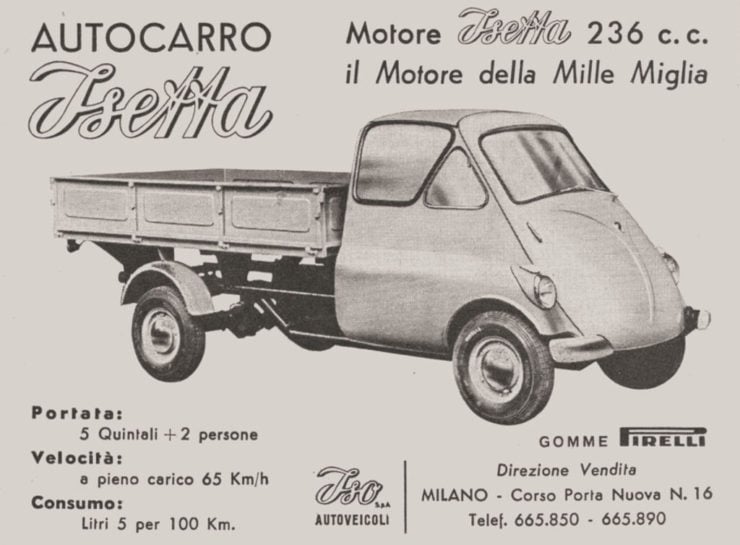

It was not only BMW’s fortunes that the Isetta bubble car and Isettacarro mini truck greatly improved however. Iso were collecting licensing fees and a royalty payment on each Isetta manufactured by other companies such as BMW.
BMW manufactured approximately 160,000 Isettas which sent a decent quantity of royalty payments into Iso’s bank account. The result of this was the strengthening of Iso’s coffers so that Renzo Rivolta could embark on his dream, to become a manufacturer of Italian GT cars the equal or hopefully better than those made by Ferrari.
Renzo Rivolta owned a number of exotic cars including Ferraris and he was confident his company could design and build cars just as good or perhaps even better, as long as he obtained the professional expertise to make the project happen.
The two professionals Rivolta brought on-board were Giotto Bizzarini, who had been chief of sports car development at Ferrari where he had been in charge of the creation of the Ferrari 250GTO, and Giorgetto Giugiaro, a talented designer working with Bertone. Giugiaro would go on to design a range of notable cars including the first generation Lotus Esprit, De Tomaso Mangusta, and the Volkswagen Golf.
The design of the Iso Rivolta was to set the pattern for the Iso Grifo models that came after it. The cars were based on a steel platform with pressed steel body panels. Iso did not have the finances nor the need to purchase expensive pressing machinery to make their body panels but they did have the necessary dies made which were kept at the factory and used on presses owned by another company when body panels needed to be made.
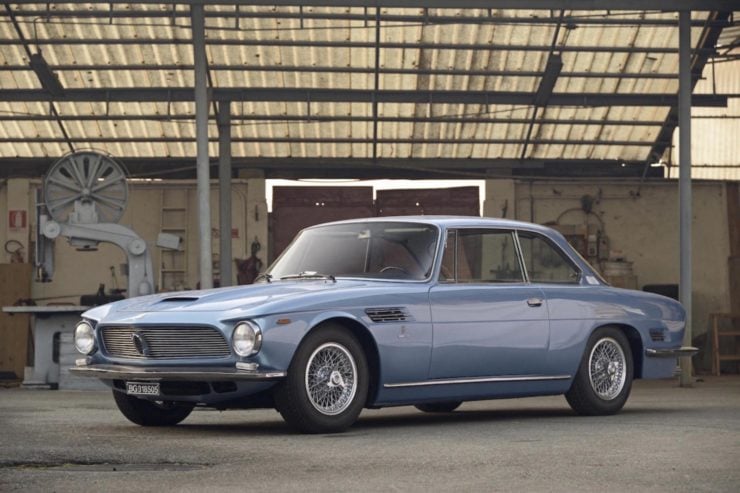

The Rivolta was made as a two door four seater GT maximizing its appeal to a wider audience. Its suspension was by unequal “A” arms at the front with coil springs, telescopic shock absorbers, and an anti-roll bar. At the rear the decision was made to use a De Dion independent rear suspension with the differential mounted to the body platform and the brakes inboard. This De Dion rear suspension used coil springs and telescopic shock absorbers and was supplemented by the use of a Panhard rod. Brakes were servo assisted solid discs all around, 12″ at the front and 11¾” at the rear. Steering was by a recirculating ball system.
The advantage of the De Dion suspension over a double wishbone system is that the rear wheels maintain a consistent camber at all degrees of suspension movement which is an advantage not only for applying engine power to the tyres but also in managing varying loads of people and luggage.
The icing on the cake for the Iso Rivolta, and the Grifo that would follow it, was the decision not to attempt to develop a unique engine but instead to use engine, gearbox and differential from regular production cars, cars with established performance credentials: so the engine chosen was a 5.4 litre small block Chevrolet V8, as used in the Corvette. The gearbox was a Borg Warner T-10 four-speed manual, and the differential was a British Salisbury limited slip unit as used in the Jaguar E-type.
The combination of the Bizzarini engineering, Giugiaro body styling and powerful but reliable American V8 engine delivered a recipe for success. Depending on engine tune the Iso Rivolta could do a standing to 60 mph in the six second range and deliver a top speed in the 124-140 mph range.
So it delivered American muscle car performance and sophisticated handling with an eye catching Italian body and interior aesthetics.
The Iso Grifo A3/L “Lusso”: 1965-1974
Series 1: 1965-1970
With the Iso Rivolta achieving excellent reviews and sales being most satisfactory Renzo Rivolta, Giotto Bizzarini and Giorgetto Giugiaro got together and decided to go for broke and create a world class two seater GT, using the same formula as for the Rivolta.
The car was to be built using the same basic engineering as the Rivolta and was to use the same 327 cu. in. (5.4 litre) small block Chevrolet V8 engine, Borg Warner four speed gearbox, and Salisbury limited slip differential.
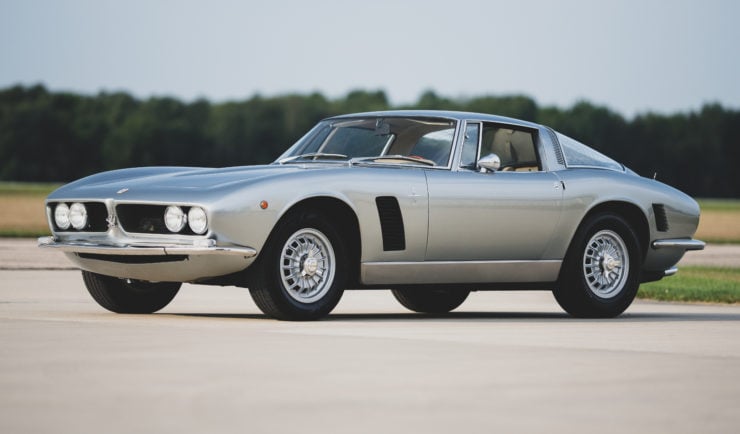

Giorgetto Guigiaro created a body style completely different to that of the Rivolta, a style that gave the car an immediate “presence” that catches your eye and holds it.
Even today, fifty five years after its introduction, this is a car that inevitably draws a crowd. It is a “driver’s car” in every sense of the word, with an interior which is so intelligently set up that the driver and passenger feel completely at home from the first time they go out in the car. With Bizzarini in charge of the engineering and Giugiaro the maestro of the styling the car was completed in 1963 and would be offered for sale from 1965 onwards.
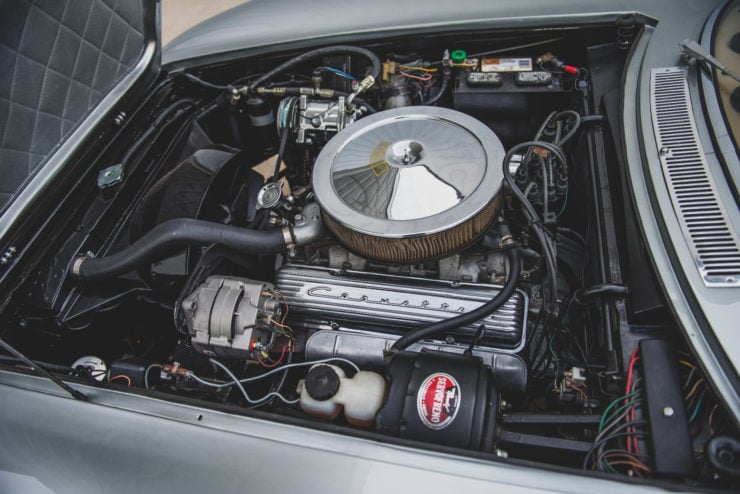

The Grifo was first offered with the same 327 cu. in. V8 as the Rivolta and this engine was set up to produce 300 hp. This single engine choice did not last for long however and was soon expanded to include the 327 cu. in. V8 in a higher state of tune producing 350 hp. Performance was therefore quite neck straining with top speed up to about 170 mph depending on engine version installed. It was in fact the fastest production car that one could buy back in 1966.
1966 brought tragedy to Iso as Renzo Rivolta passed away unexpectedly leaving his 25 year old son Piero to take the reins of the company and continue his father’s legacy. One of the decisions Piero made was to increase the engine power of the Iso Grifo to ensure it remained one of the fastest production cars on earth.
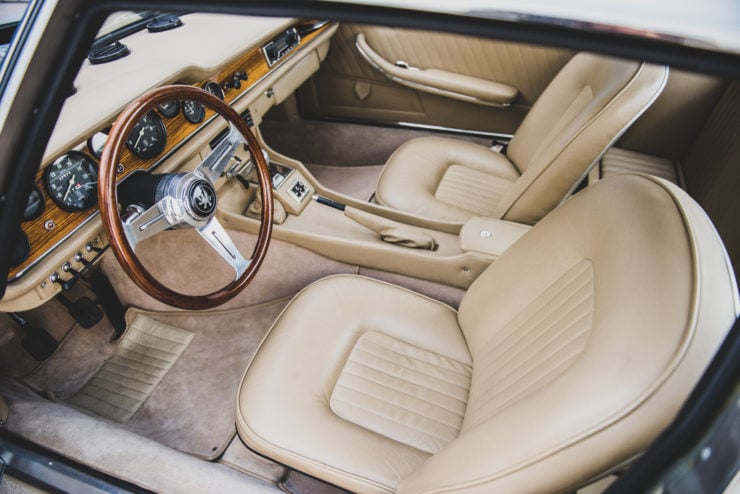

So it was in 1968 that Piero Rivolta decided it was time to up the engine size to something a tad more jaw dropping. To this end the Grifo was re-engineered to accommodate the large block Chevrolet V8 and a 427 cu. in. (7 litre) V8 was installed into it.
This L71 427 cu. in. engine was fitted with the “Tri-Power” triple twin barrel Holley carburettors and produced 435 bhp @ 5800 rpm and 460 lb/ft of torque @ 4000 rpm and was the same engine as available in the 1967-1969 Chevrolet Corvettes. With this engine installed the Grifo was capable of 186 mph and delivered standing to 60 mph times in a bit above 5 seconds.
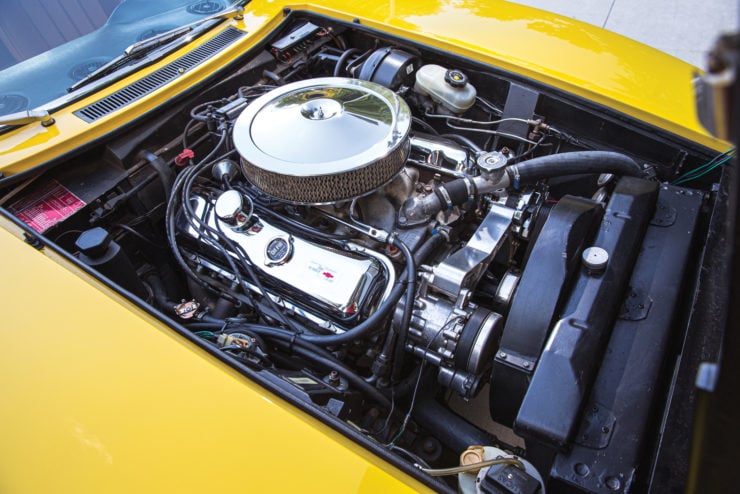

There were pluses and minuses to this change. In order to fit the larger and more powerful L71 engine into the Grifo the chassis had to be strategically strengthened and the engine bay made larger for the bigger engine.
The low sleek bonnet/hood of the Grifo was too low for the engine and so a simple and novel raised section was incorporated into it which is nicknamed either the “pagoda” or the “penthouse” in various sources. I tend to favor the “pagoda” nickname as the raised section looks rather like a flattened pagoda to me.
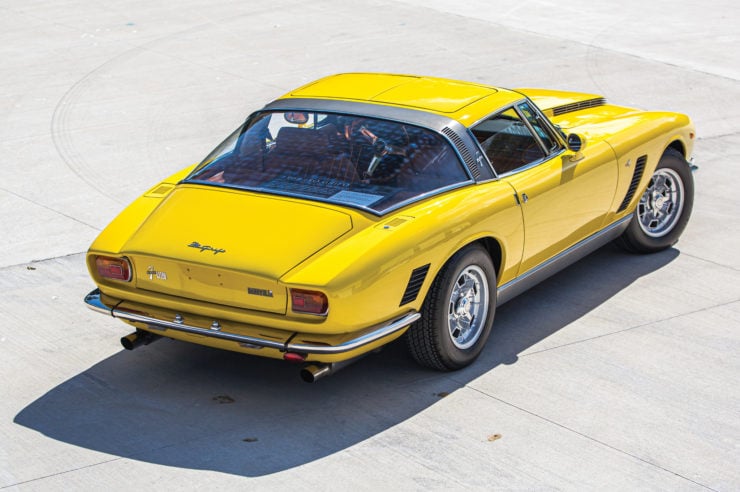

Although the bigger engine provided more power and torque it was also heavier and that extra weight did not improve the Grifo’s sweet handling. So the character of the car was changed both in terms of its handling and its aesthetics.
So as you consider which specification car you are going to hunt for you’ll need to decide if you are looking for a car with the maximum power and the aggressiveness of the hood mounted “pagoda”, or one of the earlier cars with the smaller and lighter engine that had less power but more lively handling.
The Iso Grifo A3/C “Corsa” Competitzione and Bizzarini GT5300 Strada, Corsa, and America: 1963-1969
Giotto Bizzarini worked for Ferrari up until the 1961 “Ferrari night of the long knives” when a number of Ferrari’s top engineers left the company. Whilst at Ferrari Bizzarini had created the Ferrari 250 GTO and the ideas he had invested into that car were to be incorporated into a car of his own which he hoped to create at some point in his new future.
His first real opportunity to put that ambition into practice came in 1962 when he was commissioned by Count Giovanni Volpi, who was the owner of the Scuderia Serenissima Republica di Venezia, to upgrade a 250 GTO for racing. The end result was the “Ferrari Breadvan”, but the story for Giotto Bizzarini was not to end there. He formed Società Autostar in 1962, as a company that would take on freelance car engineering projects.
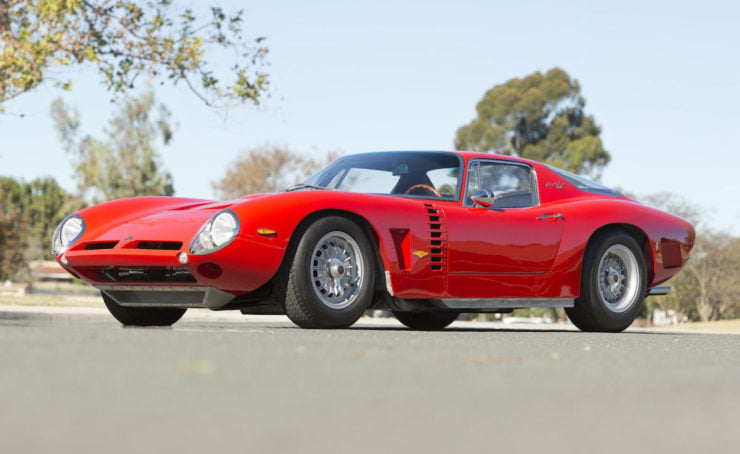

It was during this period when Bizzarini was commissioned by Lamborghini to design the V12 engine for their first cars: this engine being first fitted into the Lamborghini 350GT of 1964. This was also the period in which Bizzarini was also commissioned by Renzo Rivolta of Iso to do the engineering for the Iso Rivolta, and then the Iso Grifo.
Bizzarini first worked on getting those two cars created but he also still had a yearning to create a car that incorporated the ideas he had proved in the Ferrari 250GTO. Bizzarini believed that in addition to the market for the luxurious Iso Grifo A3/L that there was also a market for a racing version, an A3/C “Corsa” (Competition). He therefore set about creating that car also, basing it on the same platform chassis as the Iso Rivolta and Iso Grifo A3/L.
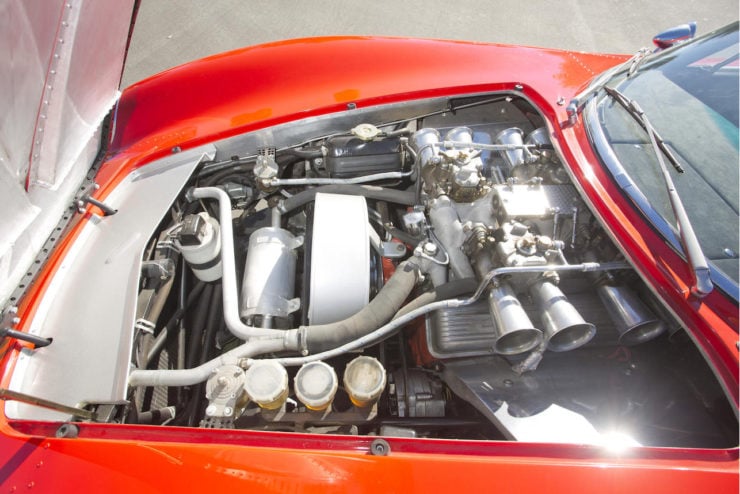

For the A3/C design the engine was moved back 16″ (40 cm) to create a “front mid-engine” car, one of the first created. As this was to be a competition oriented car Bizzarini was not overly concerned that bringing the engine that far back into the cockpit would also present problems in keeping the cockpit cool.
Nor was he worried that some engine maintenance jobs, such as adjusting the ignition timing, would require the removal of a dashboard panel to gain access. What Bizzarini was intent on was creating the most balanced high performance car he could, and there can be little doubt that he succeeded.
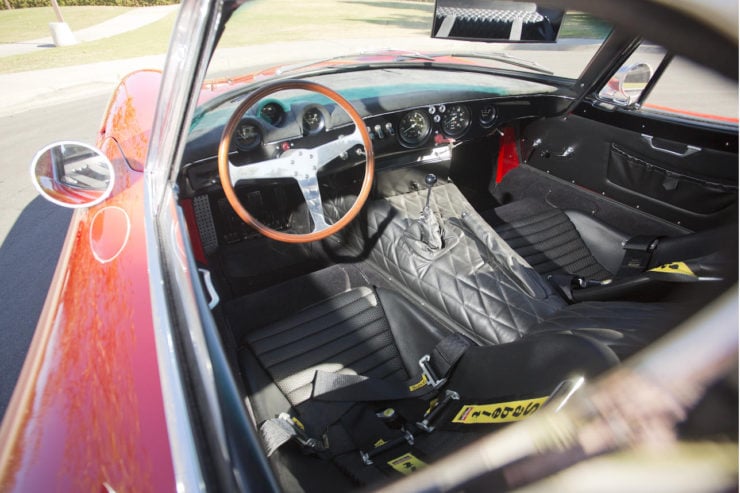

Bizzarini wanted the A3/C to be sold alongside the A3/L as an Iso Grifo, but Renzo Rivolta was not amenable to that idea. The result of this was a split between Bizzarini and Renzo Rivolta with Bizzarini taking his design home to his own company Società Autostar where he made and sold the cars under the Bizzarini name.
Twenty two of these cars were made as the Iso Grifo A3/C and the remainder of the 133 cars were made as the Bizzarini GT 5300 Strada, GT 5300 Corsa, or as the Bizzarini GT America.
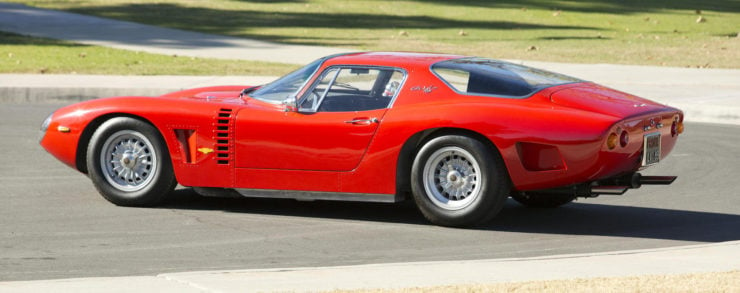

For the A3/C Bizzarini chose to make the bodywork of lightweight Duralumin, an alloy of aluminium, copper, and magnesium that’s exceedingly difficult to weld. In order to get around that difficulty early cars have the body panels riveted together: this requiring just over 7,000 rivets. Later examples of these cars manage to do away with the rivets and solve the problems of welding the Duralumin.
Three of the Bizzarini GT 5300 Strada were made as spyders: one as a full convertible and two with removable “T” tops.
The Iso Grifo Series 2: 1970-1974
In 1970 the Series II Grifo underwent some styling changes with the front being treated to semi-hidden headlights with folding “eyelids”. This tended to upgrade the stylishness of the car although there are people who don’t prefer the new look just as there are those that do.
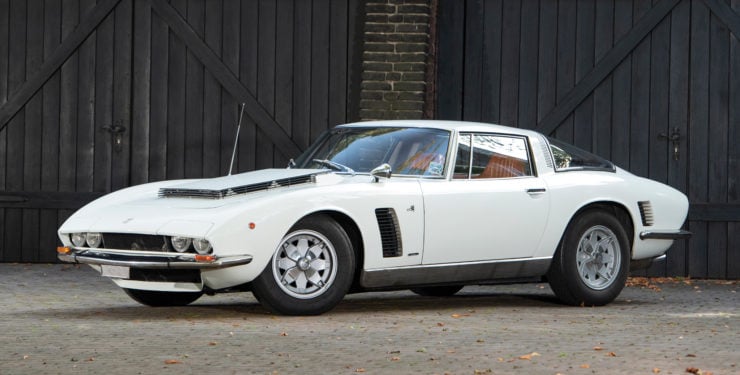

For those looking for the ultimate in power and performance an IR9 “Can Am” version of the car was fitted with the Chevrolet 454 7.4 litre engine in its LS6 form fitted with a single 4-barrel Holley carburettor capable of delivering 800 cu. ft. per minute of air and gasoline mixture with the result that engine power moved up to 450 bhp @ 5,600 rpm combined with 500 lb/ft of torque @ 3,600 rpm.
This turned the Iso Grifo into the sort of muscle car that Carrol Shelby would have liked. The Grifo had indeed become an Italian-American Muscle Car blending the best of Europe with the best of the United States.
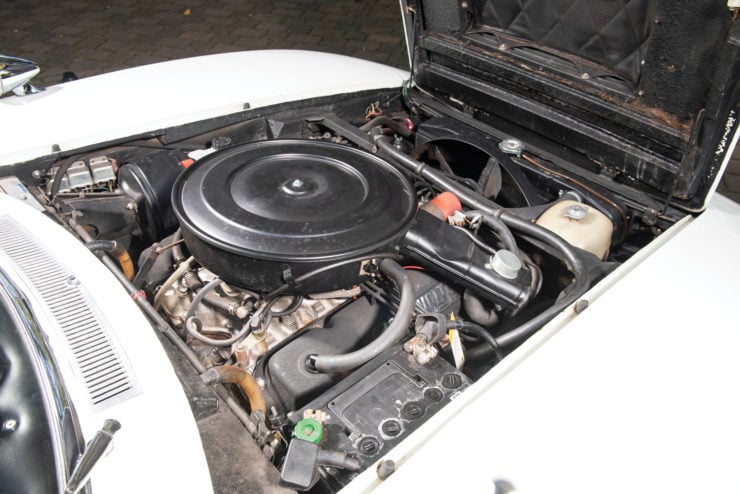

Of the new Series 2 Grifos just five were built with a Targa roof, making these cars some of the rarest of a rare breed. During Series 2 production the Grifo was offered with the five speed ZF manual gearbox and just 23 cars were built with that transmission, making this version very rare also.
The ZF gearbox is nowadays near impossible to get parts for and so modern owners are often forced to change to a different transmission. If buying a car that was originally fitted with the ZF five speed gearbox it is best to ensure the original gearbox comes with the car whether or not it is still installed.
Production of the Big Block Chevrolet powered Grifos ended in 1972 and instead Iso migrated to the Ford Boss 351 V8 engine for this new Grifo IR-8 model. The reason for this was that General Motors began demanding payment up front for each engine they supplied. Again production of this model would not last long: international politics played a fatal hand in the form of the 1973 World Oil Crisis.
This event was created by the Organization of Arab Petroleum Exporting Countries when they decided to impose an oil embargo against nations that had been in support of the nation of Israel during the Yom Kippur War of 6-25 October 1973. The result of this oil embargo was a dramatic escalation of oil prices and strangulation of supply of petroleum products in nations subjected to the oil embargo, including the United States.
The market for exotic and thirsty V8 GT cars simply dried up forcing Iso S.P.A to close the business in 1974. It was a time for the bubble cars again, but Iso could not take that step backwards.
At the end of production Iso had built 330 Series 1 Grifos, and 83 Series 2, making a total of 413 cars. 90 of these cars were “7 Litri” built with the big block Chevrolet engines. There were thirteen Series 1 cars made with the Targa roof, and four Series 2.
Specifications: The Iso Grifo A3/L
Chassis and Body: Steel platform chassis with pressed steel body panels. Length 174.4″ (4,430 mm). Width 69.7″ (1,770 mm). Height 47.2″ (1,199 mm). Wheelbase 98.4″ (2,499 mm). Kerb Weight 3,150–3,550 lb (1,430–1,610 kg).
Suspension and Steering: Front; unequal length “A” arms with coil springs and tubular shock absorbers. Rear; De Dion rear suspension with coil springs, telescopic shock absorbers, and Panhard Rod. Steering by recirculating ball system.
Brakes: Servo assisted solid discs all around, 12″ at the front and 11¾” at the rear. Rear brakes mounted inboard.
Engines:
Chevrolet Small Block 327 cu. in. (5.4 litre) OHV V8. Power 300 hp or 350 hp depending on tune.
Chevrolet Big Block 427 cu. in. (7 litre) OHV V8. L71 engine: “Tri-Power” triple Holley twin barrel carburettors giving power of 435 bhp @ 5,800 rpm with 460 lb/ft torque at 4,000 rpm of torque.
Chevrolet Big Block 454 cu. in. (7.4 litre) OHV V8. LS6 engine: Single 4-barrel Holley carburettor giving power of 450 bhp @ 5,600 rpm combined with 500 lb/ft of torque @ 3,600 rpm.
Ford “Boss 351” OHV V8 as used in the Boss 351 Ford Mustang. This engine was fitted with a four-barrel Autolite model 4300-D spreadbore carburetor and produced power of 330 bhp.
Transmissions:
Borg Warner T10 four speed manual gearbox.
Borg Warner three speed automatic gearbox.
ZF five speed manual gearbox.
Final Drive:
Salisbury limited slip differential
Specifications: Iso Grifo A3/C and Bizzarini GT Strada, Corsa, and America
Chassis and Body: Steel platform chassis with pressed steel body panels. Length 175.5″ (4,460 mm). Width 69.3″ (1,760 mm). Height 44.1″ (1,120 mm). Wheelbase 98.4″ (2,499 mm). Kerb Weight 2,646 lb (1,200 kg).
Suspension and Steering: Front; unequal length “A” arms with coil springs and tubular shock absorbers. Rear; De Dion rear suspension with coil springs, telescopic shock absorbers, and Panhard Rod. Steering by recirculating ball system.
Brakes: Servo assisted solid discs all around, 12″ at the front and 11¾” at the rear. Rear brakes mounted inboard.
Engines:
GT Strada: Chevrolet Small Block 327 cu. in. (5.4 litre) OHV V8. Power 365 hp with 284 lb/ft of torque.
GT Corsa: Chevrolet Small Block 327 cu. in. (5.4 litre) OHV V8. Power 400 hp.
Late Models: Chevrolet Big Block 454 cu. in. (7.4 litre) OHV V8. LS6 engine: Single 4-barrel Holley carburettor giving power of 450 bhp @ 5,600 rpm combined with 500 lb/ft of torque @ 3,600 rpm.
Transmission:
Borg Warner T10 four speed manual gearbox.
Final Drive:
Salisbury limited slip differential
Buying and Looking After An Iso Grifo
If you are considering purchase of an Iso Grifo, or the Bizzarini version, best advice is to become a part of a club who’s membership is made up of Iso and Bizzarini enthusiasts – people who love these cars and who’s ambition is to care for them and enjoy them. So a good place to start is the Iso and Bizzarini Owner’s Club. You’ll find their web site if you click here.
You will want to get to know people who can help you with information, parts, and recommendations for people to do specialized work that you can’t undertake yourself.
Because these cars are rare obtaining some parts can be challenging. However, unlike many exotic cars of the 1960’s and 1970’s the Iso Grifo uses a lot of components from standard American cars of that era, and that makes engine and transmission maintenance relatively easy. Renzo Rivolta was wise in choosing to use a drive train made of standard parts including Chevrolet Corvette and Ford engines and gearboxes, and the Salisbury limited slip differential as used in the Jaguar XKE.
As for the price you should expect to pay for a Grifo the best strategy is to scan the auction sites such as RM Sotheby’s, Mecum, Auctions America and Bonhams to name a few, and look at both asking prices and past selling prices. The value of classic cars fluctuates and so it is necessary to evaluate what the current market values are.
The Iso Grifo was a car that appealed to owners who wanted to personalize their car so you should expect to find cars with modifications. It is common for cars to have had the gearbox changed to a more modern five or six speed for example. Similarly engine swaps are a possibility so checking whether or not an engine is original to the car is helpful in determining its approximate value. Having the car inspected by a professional who is familiar with these cars is a wise investment, especially if the asking price on the car you are interested in is high.
Suffice to say that a car that uses a common American drive-train is vastly easier to maintain than something exotic like a Ferrari, Maserati or Lamborghini: and that means you will be able to drive and enjoy the car without the very high costs commonly incurred if using a classic car built with complex proprietary parts that requires specialist repair and tuning.
This video on “The Red Grifo” gives an insight into one man’s life with his Iso Grifo.
Conclusion
It has been said that owning a beautiful car and not driving it is like being married to a beautiful woman and not sleeping with her because you are saving her for her next husband. The Iso Grifo is a car that lends itself to being a drive and enjoy proposition because the engine and drive-train are made using quite generic components.
Body panel repair is something that poses more challenges because of the small number of cars made: so it may be necessary to have new panels created by hand to replace ones damaged by accident or rust.
This is a price to pay in order to own and use such a rare work of automotive art. But if you can afford those sorts of maintenance costs and are willing to invest the time into the Grifo it is a car that will not disappoint. It was created by some of the greatest names in sports car design, and it was built to a high standard, not to a price.
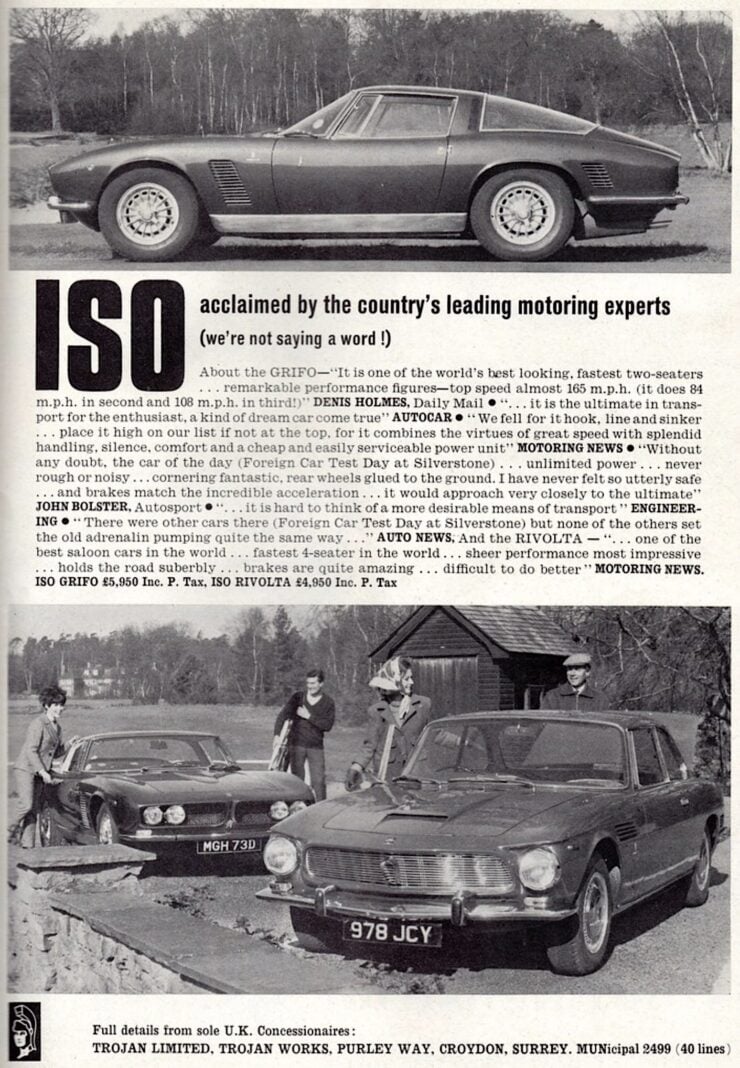
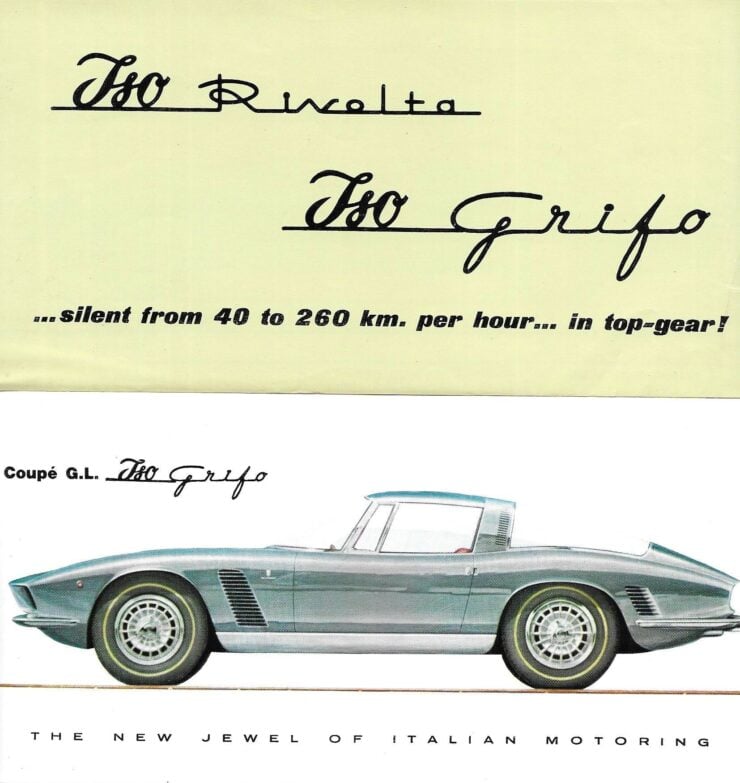
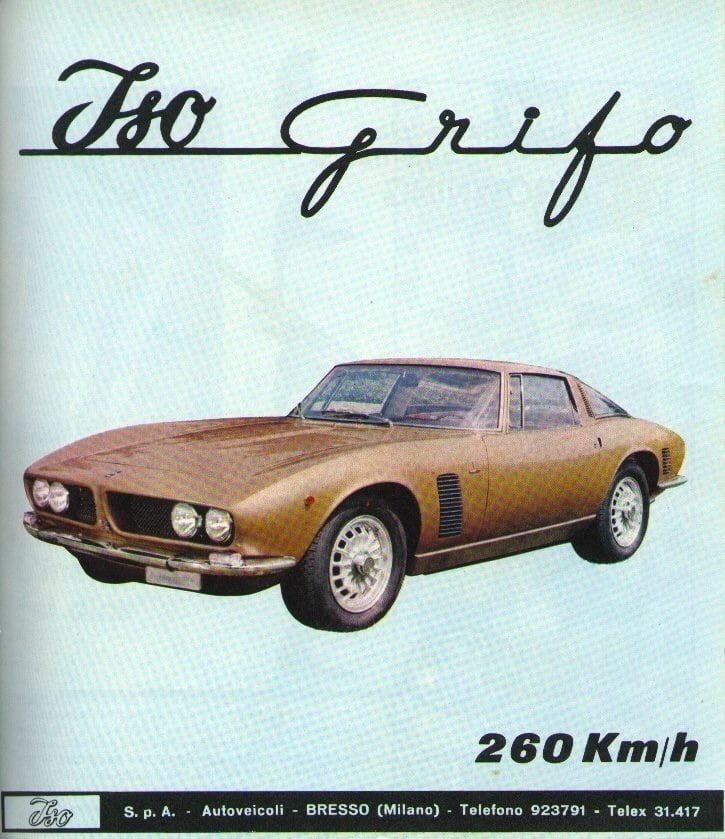
Picture Credits: BMW, Bonhams, Iso, RM Sotheby’s

Jon Branch has written countless official automobile Buying Guides for eBay Motors over the years, he’s also written for Hagerty, he’s a long time contributor to Silodrome and the official SSAA Magazine, and he’s the founder and senior editor of Revivaler.
Jon has done radio, television, magazine, and newspaper interviews on various issues, and has traveled extensively, having lived in Britain, Australia, China, and Hong Kong. The fastest thing he’s ever driven was a Bolwell Nagari, the slowest was a Caterpillar D9, and the most challenging was a 1950’s MAN semi-trailer with unexpected brake failure.

